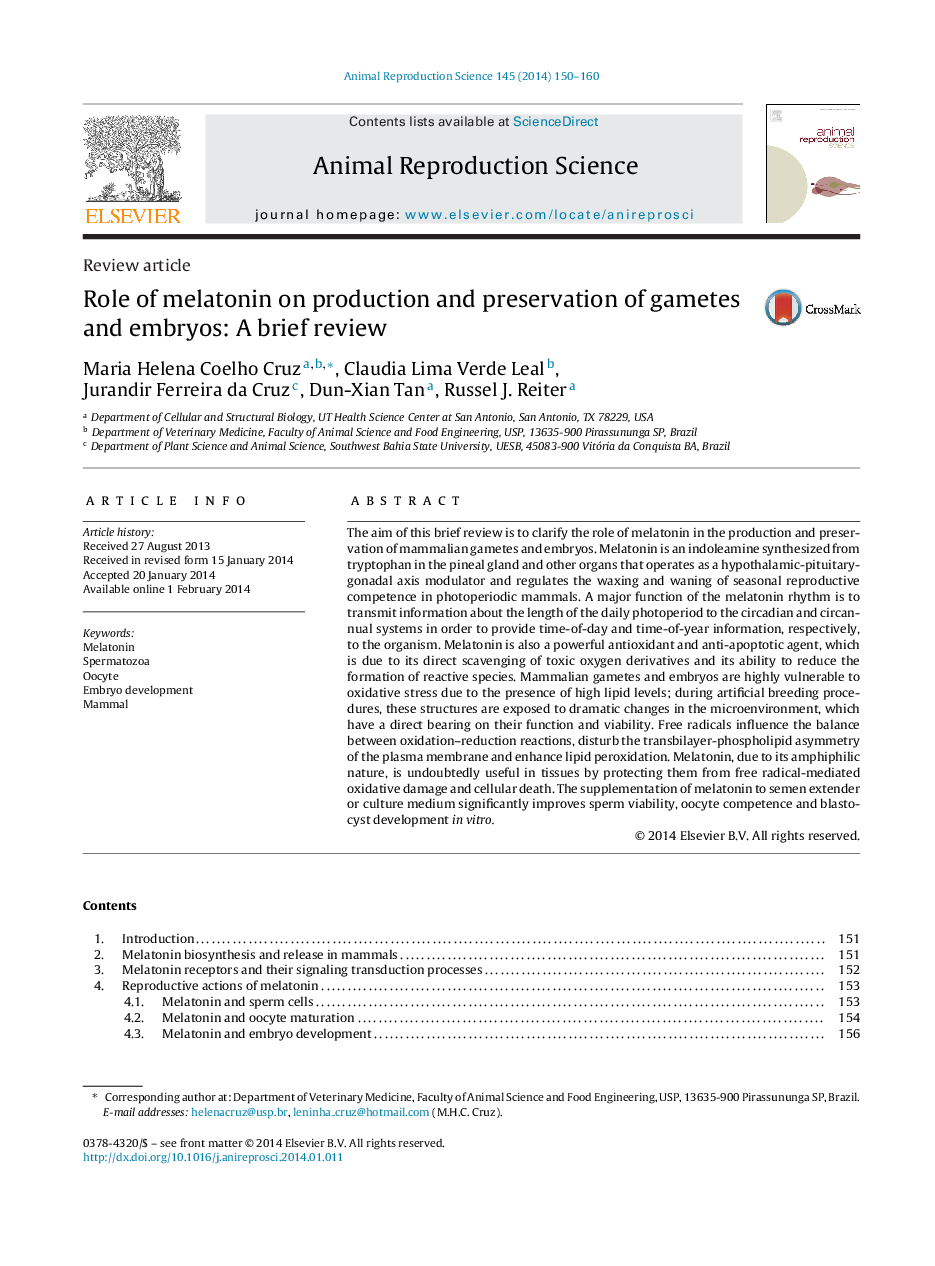| کد مقاله | کد نشریه | سال انتشار | مقاله انگلیسی | نسخه تمام متن |
|---|---|---|---|---|
| 2072972 | 1544738 | 2014 | 11 صفحه PDF | دانلود رایگان |
The aim of this brief review is to clarify the role of melatonin in the production and preservation of mammalian gametes and embryos. Melatonin is an indoleamine synthesized from tryptophan in the pineal gland and other organs that operates as a hypothalamic-pituitary-gonadal axis modulator and regulates the waxing and waning of seasonal reproductive competence in photoperiodic mammals. A major function of the melatonin rhythm is to transmit information about the length of the daily photoperiod to the circadian and circannual systems in order to provide time-of-day and time-of-year information, respectively, to the organism. Melatonin is also a powerful antioxidant and anti-apoptotic agent, which is due to its direct scavenging of toxic oxygen derivatives and its ability to reduce the formation of reactive species. Mammalian gametes and embryos are highly vulnerable to oxidative stress due to the presence of high lipid levels; during artificial breeding procedures, these structures are exposed to dramatic changes in the microenvironment, which have a direct bearing on their function and viability. Free radicals influence the balance between oxidation–reduction reactions, disturb the transbilayer-phospholipid asymmetry of the plasma membrane and enhance lipid peroxidation. Melatonin, due to its amphiphilic nature, is undoubtedly useful in tissues by protecting them from free radical-mediated oxidative damage and cellular death. The supplementation of melatonin to semen extender or culture medium significantly improves sperm viability, oocyte competence and blastocyst development in vitro.
Journal: Animal Reproduction Science - Volume 145, Issues 3–4, March 2014, Pages 150–160
